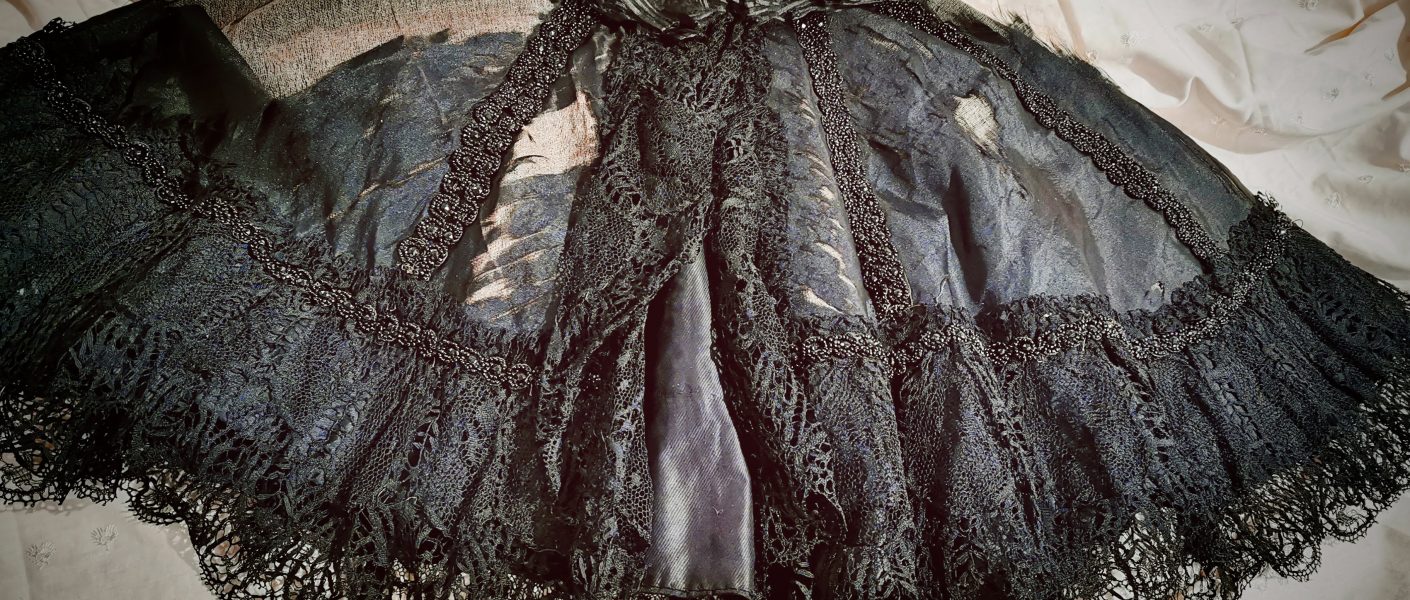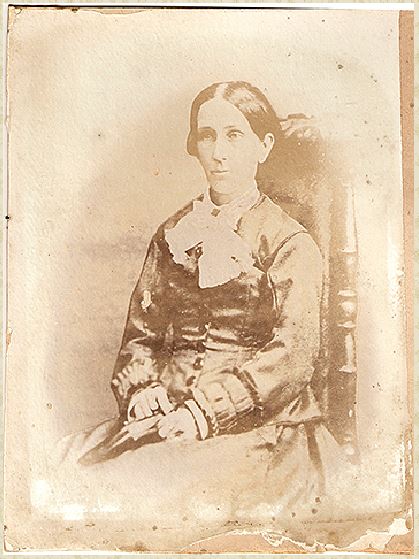Back when it was safe, on one of my antique hunting trips, I stumbled upon what was once an absolutely stunning Victorian cape. When I was walking around scanning for treasure, the first thing that caught my eye was tattered shreds of black fabric peeking out from the back of an old clothes rail, if it’s shredded, ragged and for sale, it’s probably interesting and definitely worth investigating! Then with the glint of black beading I knew that I had found something that I was going to get excited about. The very second it was in my hands I knew it was coming home with me. I didn’t even need to inspect it, it was mine!!
It is true the cape is definitely not in the best condition by any means, certainly not wearable but it has so much more to offer and this is what I was so excited by. Much of the silk has long since deteriorated leaving plenty enough to gauge the feel and texture of the original fabric but also exposing every detail of the overall construction of the garment. Every seam line, snip, thread type and stitch is all revealed. It is clearly handmade from scratch which says so much about the maker and the wearer.
Anyone who knows me knows all too well that the first thing that I will look at is the lace. This is most certainly an extravagant piece of lace, 4.5 meters and 6-inch wide but it does not appear to be handmade, the honeycomb pattern in the mesh between the patterns of the lace would suggest to me that it was manufactured, it also has a slightly ‘crispier’ feel to it than the handmade laces quite often possess.
One thing that I noticed in the construction is the seam structure, there is only one seam each layer of the Cape, it is not symmetrical, it is offset on a 45° angle, this shows that the original fabric wasn’t wide enough to cut the full garment from and the seams are on opposite sides of the Cape suggesting that both layers were cut at the same time but when the garment was constructed and the layers were put together, they were facing opposite directions which at least eliminates an uneven bulky seam but a reasonably unusual approach. The fact that the fabric wasn’t wide enough suggests two possibilities, firstly, buying the most affordable sized cloth meant that this was a more cost effective way to make the garment or secondly, the cape was created by repurposing other garments, the single seam makes an easy approach to construction that would have been fast and simple.
The different threads and stitches can clearly be seen throughout. The different coloured threads appear to not only show exactly how the garment was stitched but also that the cape was repaired on at least one occasion which leads me to believe that this was an important and probably much loved piece in somebody’s wardrobe.
This garment may well have been made at home though lower classes purchased garments from second and even third hand shops, discarded garments that, while no longer fit for society’s finest, still had life left in them especially for someone with a little determination and creativity!
The element that completes the whole garment and takes it to an entirely new level is the beading, clearly sewn on by hand, added on after the construction of the garment had been completed and in a manner that I would not expect to see in a garment purchased in a high end Victorian boutique.
Of course, I am desperate to make a reconstruction of this stunning garment and as we are in lockdown, I can only use what I have to hand so I am going to use a considerable amount of artistic license, I have natural calico, cotton and a small selection of laces but I can’t wait to see what I can do!


